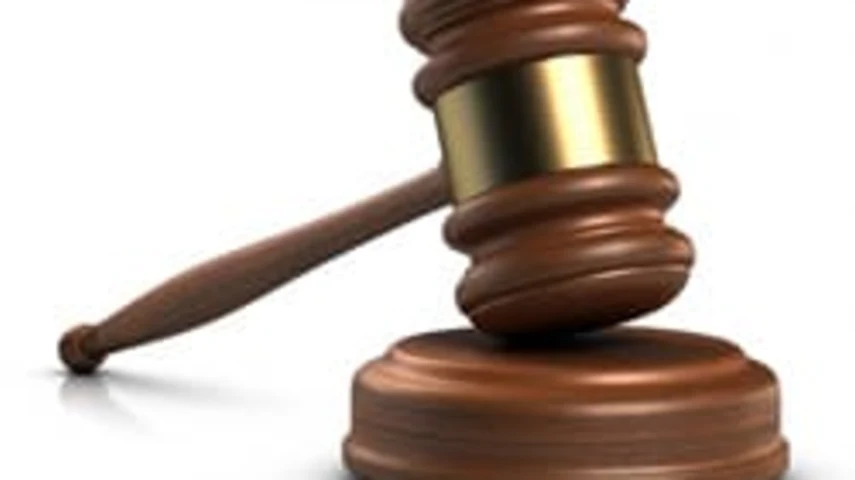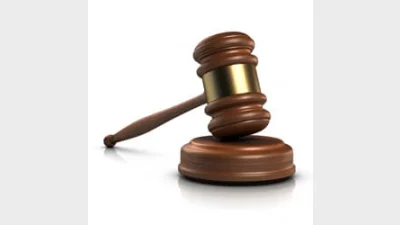We have ways of making you talk



I’ve interviewed a lot of people in my time — not only in my current role as a lawyer, but also during 10 years as a police officer and seven years working with the Australian Securities and Investments Commission (ASIC).
There is not a single correct approach to conducting effective interviews. However, research shows that many people have little or no training in how to conduct an effective interview.
A number of professionals are required to interview people in the course of their work. If you are an adviser, you probably conduct interviews with clients every day.
Usually, the purpose of an interview is to obtain information from the client that will enable you to determine the scope of your task and develop a reasonable basis for any advice you might give. This can help you to meet your legal obligations and reduce the risk of being sued by a disgruntled client.
Compliance professionals (both in-house and external) also conduct interviews. They often interview advisers during routine compliance audits. Sometimes they have the more difficult job of interviewing an adviser when investigating a complaint that has been made against the licensee.
While there are important differences between these kinds of interviews, it is fair to say that the universal task of any interview is to create an environment in which those being interviewed will wish to and be able to provide accurate and reliable information.
How can you achieve this?
How to conduct an interview if you’re a compliance professional
The PEACE model provides a structure for the planning and conduct of an investigative interview. It is well regarded and widely used in law enforcement circles. The techniques used in the PEACE model are also useful for compliance professionals who are conducting interviews.
PEACE is a mnemonic for the five stages of an investigative interview:
~ P— planning and preparation;
~ E — engage and explain;
~ A — account;
~ C — closure; and
~ E — evaluation.
Within the PEACE model there are two techniques:
~ the ‘conversation management’ technique; and
~ the ‘cognitive interviewing’ technique.
The conversation management technique is suited to interviewing less co-operative people. It will be of most use for compliance professionals investigating the conduct of an adviser whose version of events differs from what the licensee suspects took place, or with whom the licensee is having a dispute.
In this approach, the interview is divided into the following two phases.
1. After the ‘engage and explain’ stage has been completed, the interviewee is asked to provide their account of what happened. The interviewer sub-divides this account into a number of parts that are then, by ‘probing’, asked to be recalled by the interviewee in more detail. After the interviewer obtains the interviewee’s full account, the interviewer checks and confirms it.
2. Thereafter, the interviewer moves on to their own agenda, which includes putting conflicting facts to the interviewee and giving them an opportunity to make a comment in relation to them. This may involve confronting the interviewee with accounts that contradict their own.
The cognitive interviewing technique is most effective with co-operative subjects. Compliance professionals will find this useful when interviewing advisers. It will usually be more appropriate than the conversation management technique for these kinds of interviews.
The technique is aimed at maximising memory retrieval. In this approach, the interviewee is first asked to think back to the event and mentally re-live the event in order to retrieve the information relevant to the investigation. The interviewee is then asked for a further recall using a different order of events or perspective on events. The approach is designed to cater for how memory works and how information is stored and retrieved by humans.
For example, the licensee may have a client whose husband has died and who has not received adequate insurance to be able to meet mortgage repayments. She is forced to sell the family home. She makes a complaint against the licensee, a dealer group with 50 advisers, alleging that the adviser did not recommend an appropriate level of cover.
The compliance officer goes to the adviser’s office to find out as much information as she can about the adviser’s interaction with the client and her husband.
The compliance officer could conduct the interview using the cognitive interviewing technique under the PEACE model, which is described below in more detail.
P — planning and preparation
Planning an interview is essential, but planning to the ‘nth degree’ is difficult because you must respond to the way the interviewee structures their account.
You should start with a good general idea of what your approach might be with each particular interview.
However, you should be prepared to be flexible. Prepare as much as possible for any eventuality during an interview so that you will be able to respond appropriately.
E — engage and explain
In this phase you engage with the interviewee and explain to them the purpose of the interview as well as what will happen during the interview. Your aim is to create an atmosphere in which the interviewee will want to talk to you.
Engage with the interviewee and build a rapport with them. You will need to respond to a number of factors (which may include the interviewee’s particular needs, fears, anxieties or expectations) in order to do this.
Your responses to an interviewee must not be the result of a stereotypical image based on culture, clothing, speech or behaviour.
Establishing a professional relationship with an interviewee encourages them not only to participate in the interview, but also to provide a full and honest account.
Some interviewees will be nervous and may require some reassurance. Do not misinterpret nervousness as evasiveness.
While you may be familiar with the interview procedures you are following, many interviewees are not. Therefore, it may be prudent to explain these procedures at an early stage to help relax the interviewee and avoid surprising them during the interview.
Remember that recalling an event from memory could be difficult, especially when there are other things going on.
When the matter under investigation is painful, embarrassing, complicated, or confusing, remembering things accurately and giving a truthful account of them can be even more difficult.
An adviser who faces the pressure of a potential claim may understandably be flustered when trying to recall the story of their interactions with the client.
A — account
Given that the primary purpose of an investigative interview is to establish the truth of the matter under investigation, interviewees should be encouraged and permitted to give an account of all that they know and to tell you everything that comes to mind, in their own words.
To obtain an accurate and reliable account, you should:
~ obtain the interviewee’s own uninterrupted account;
~ clarify their account by probing; and
~ when necessary, challenge the interviewee’s account.
Asking first for an uninterrupted account has the following advantages:
~ you get to know the interviewee’s version without prompting or interrupting them; and
~ the interviewee has a chance to explain their views and consequently should feel that they have had an opportunity to have their say.
You may take notes at this time, but don’t let this affect the flow of the interview.
The first account given by the interviewee will probably be incomplete. Therefore, subsequent questions must often be put in a systematic way to ensure that they have recalled all that they can.
To assist the interviewee, you may need to break down the questioning of their account into manageable episodes or topics as identified during your planning and then as the interviewee provided in their initial account.
In this regard, you should use open questions to examine the areas you have identified and you should keep asking questions about each topic until you have all the relevant information, or the interviewee is unable to provide any more information. You should prefix your questions with who, what, when, where, why or how.
As you proceed you should summarise what has been said about one topic to check your understanding is accurate, before moving on to the next. Apart from giving you the opportunity to check on your understanding of what has been said, summarising also gives the interviewee the opportunity to add to, or alter, what they have said. It helps to maintain a professional working relationship by showing you have listened and understood what the other person has said.
The account needs to be challenged if and when you have good reason to suspect that an interviewee is deliberately withholding relevant information, or is knowingly giving a false account.
Of course, inconsistency with other evidence does not necessarily mean that the interviewee is lying or even mistaken. But any inconsistencies will need explanation, either immediately or in the future.
You should refrain from challenging an interviewee while they are actually giving their account. Doing that might discourage them from continuing to give their explanation.
C — closure
While it is vital to build a rapport at the beginning of an interview, it is equally important for you to strive to maintain that rapport with the interviewee at all times during the interview.
After the interviewee’s full account has been obtained, you should:
~ summarise the main points and invite the interviewee to correct, add or alter the version of events provided;
~ invite questions or feedback;
~ reinforce your appreciation of the interviewee’s help and co-operation;
~ provide the interviewee with your contact details and invite them to contact you if they feel the need;
~ let the interviewee know what is the next step (for example, that you will draft a report and send it to them for their feedback); and
~ explain to them that they are likely to remember more information about the incident in the future and that, if they do, they should jot it down and contact you.
E — evaluation
At this stage, you should evaluate:
~ information obtained during the interview;
~ the whole investigation in light of that information; and
~ your performance during the interview.
How to conduct an interview if you’re an adviser
Some elements of the PEACE model can be incorporated by advisers when interviewing clients. An interview with a client should consist of four stages:
1. developing rapport;
2. identification of needs;
3. fact-finding; and
4. closing.
Developing rapport
You never get a second chance to make a first impression.
The first requirement in an interview with a client is to develop rapport and to motivate them to speak openly and freely. A few moments of small talk will generally be time well spent.
Experience will dictate how much small talk is prudent in each case. Too much small talk could result in a client not taking you seriously, while too little small talk may result in you being considered arrogant and uncaring.
Most, if not all, clients will want to know how much you care before they want to know how much you know.
Don’t make assumptions about the client. Don’t assume that all clients:
~ feel comfortable seeing financial advisers;
~ will know what will happen during the interview or how long you expect it to last;
~ will be readily able to recall all of the details being sought;
~feel comfortable talking about their personal life and financial affairs;
~ will understand the relevance of the information or details being sought; and
~know what they want.
Clients are often stereotyped based on gender, ethnicity, age, occupation, or appearance. Generally, this should not occur. However, there are often predictable cultural factors. You should be aware of these and be able to respond accordingly.
A good practice is to put yourself into the position of the client.
How would you like to be treated? Better still, how would you like your parents, your spouse or your children to be treated?
At the outset, tell the client that during your meeting you will be:
~ seeking detailed information;
~ making notes;
~ considering some solutions to their needs;
~ advising of the need to make further enquiries or obtain certain documents;
~ dealing with priorities or anything urgent; and
~ making a time for a further interview.
Identification of needs
You cannot meet a client’s needs without the help of that client.
Throughout this phase of the interview you should use open questions and listen actively.
My father once told me, “You have two ears and one mouth, use them in those proportions”. I hope for my father’s sake that I’ve turned out to be an active listener.
A wise old lawyer also apparently once said, ‘The form of the question will dictate the answer’.
Open questions encourage the client to talk and allow them to provide information that you might not otherwise obtain. A question such as, ‘How can I help you?’ is a good start.
When the client has outlined their needs, you should summarise your understanding of them. This will show that you have been listening and that you understand their needs, both of which will maintain the rapport that you have built.
Of course, without knowing and understanding a client’s needs, you cannot begin to think about possible options or gathering the relevant facts.
Fact-finding
It is imperative that you gather the information necessary to begin to deal with the client’s needs.
Using open-ended questions where possible, you should tailor the flow of the conversation based on the specific information required and the client’s needs.
You may have a pro-forma checklist to assist you with this, but, in some instances, you will need to obtain specific information that is outside the scope of the checklist.
Open questions are not always appropriate. The other types of questions are:
~ closed questions; and
~ leading questions.
Each form of question has its own advantages and disadvantages and you should rely on your discretion as to when to use each form.
Open questions (for example, ‘How can I help you?’) give the client a large scope to choose the content of their response. Closed questions (for example, ‘What are your wishes for the education of your children?’) focus on specific topics.
Closed questions are generally easier to answer than open questions, but an over-reliance on closed questions may leave a client with the impression that they never got to say exactly what they wanted to.
Leading questions are those that require a simple ‘yes’ or ‘no’ answer.
Closing
An interview should be closed with a discussion about the following:
~ your preliminary views on potential options to suit the client’s needs;
~requirements, if any, in relation to further enquiries or documents;
~ priorities or anything urgent;
~ any questions or concerns that the client might have;
~ actions that will be undertaken by you on the one hand and the client on the other as a result of the interview; and
~ a time for a further interview, and its purpose.
At the end of the interview, the client should feel that they have consulted someone who is caring, professional and knowledgeable.
Angelo Venardos is a solicitor with HolleyNethercote commerciallawyers .
Recommended for you
In this episode of Relative Return Insider, host Keith Ford and AMP chief economist Shane Oliver unpack the RBA’s decision to keep the cash rate on hold in the face of rising inflation and whether the governor’s hawkish tone is a sign of things to come.
In this episode of Relative Return Insider, host Keith Ford and AMP chief economist Shane Oliver discuss the September quarter GDP figures, which show Australia’s economy regaining momentum.
In this new episode of The Manager Mix, host Laura Dew speaks to Haley Devine, head of wealth management at MaxCap Group, to delve into private credit and commercial real estate.
In this new episode of The Manager Mix, host Laura Dew speaks to Benjamin Leung, head of systematic investments at Macquarie Asset Management, to understand the use of systematic investments.







